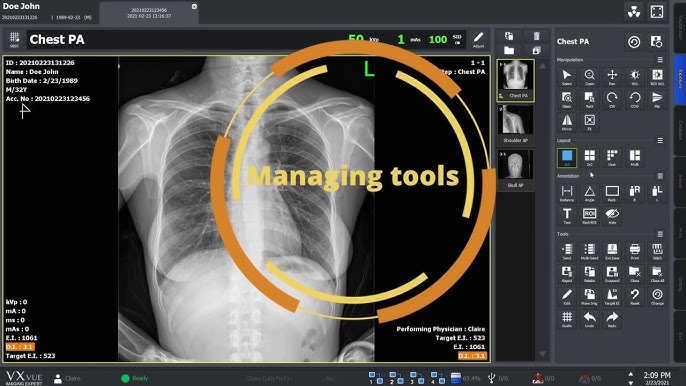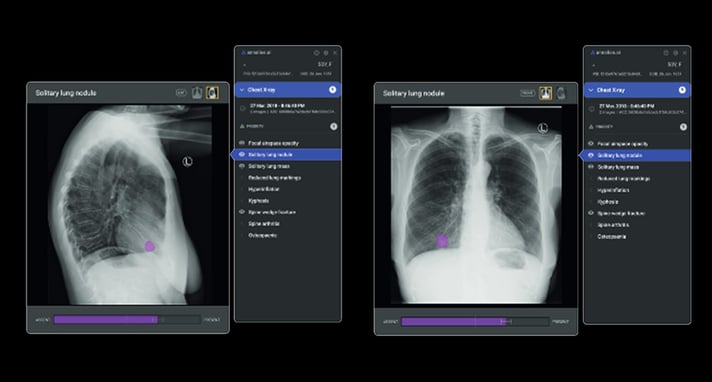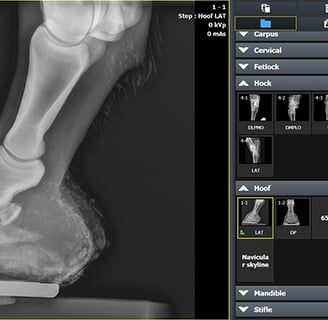Software & AI Integration for Image Processing in X-ray Technology
In the rapidly evolving field of diagnostic imaging, artificial intelligence (AI) and advanced software solutions are revolutionizing X-ray technology. The integration of AI-powered image processing enhances accuracy, efficiency, and diagnostic capabilities, making it an essential tool for radiologists and healthcare providers. This blog explores how AI and software innovations are transforming X-ray imaging, their benefits, and key solutions available in the market.
2/11/20252 min read


The Role of AI in X-ray Image Processing
AI-driven image processing in radiology involves machine learning algorithms that analyze, enhance, and interpret X-ray images. These AI models are trained on vast datasets of medical images, enabling them to identify abnormalities, suggest diagnoses, and improve image quality with minimal human intervention.
Key Features of AI in X-ray Image Processing:
Automated Image Enhancement – AI algorithms can adjust contrast, brightness, and resolution to produce clearer images.
Noise Reduction – Eliminates artifacts and background noise for improved diagnostic accuracy.
Anomaly Detection – AI can highlight fractures, tumors, infections, and other abnormalities with high precision.
Predictive Analysis – AI models can assist in early disease detection by recognizing patterns invisible to the human eye.
Workflow Optimization – Automates report generation, reducing workload for radiologists and technicians.
Benefits of AI Integration in X-ray Imaging
1. Improved Diagnostic Accuracy
Traditional X-ray interpretation depends on human expertise, which can sometimes lead to errors. AI helps reduce misdiagnosis by providing secondary validation and highlighting potential issues that might be overlooked.
2. Faster Image Processing & Reporting
AI-powered software can analyze X-ray images in seconds, enabling faster decision-making and reducing patient wait times.
3. Enhanced Image Quality
Modern AI tools enhance image clarity by refining resolution and reducing artifacts, making it easier to identify conditions such as fractures, infections, and tumors.
4. Cost Efficiency & Time Savings
By automating routine tasks like image enhancement, abnormality detection, and report generation, AI reduces the workload on radiologists, cutting operational costs and improving efficiency.
5. Standardized Interpretation
AI eliminates variations in human interpretation, ensuring uniformity and reliability in X-ray analysis.
Top AI-Powered X-ray Imaging Software Solutions
Several cutting-edge AI tools are available in the market for X-ray image processing. Some of the leading solutions include:
1. Qure.ai
AI-powered X-ray interpretation tool
Detects lung abnormalities, fractures, and TB
Offers cloud-based solutions for remote access
2. Zebra Medical Vision
AI-driven radiology solutions for chest X-rays
Assists in early disease detection with predictive analytics
Automates workflow for radiologists
3. Google's DeepMind Health
Uses deep learning for accurate disease detection
Enhances the ability of X-rays to detect cancer and lung diseases
4. Aidoc
AI-powered imaging analysis for rapid diagnosis
Supports real-time anomaly detection in X-ray images
The Future of AI in X-ray Imaging
AI and software integration in X-ray imaging are still evolving, with continuous advancements improving accuracy and efficiency. Future developments may include:
Real-time AI-assisted diagnosis for emergency care settings.
Integration with PACS (Picture Archiving and Communication Systems) for seamless data management.
Enhanced deep learning models trained on diverse datasets for improved diagnostic capabilities.




Radiology Business – https://www.radiologybusiness.com
RSNA (Radiological Society of North America) – https://www.rsna.org
AI in Healthcare News (AuntMinnie) – https://www.auntminnie.com
Nature - Medical Imaging AI Research – https://www.nature.com/subjects/medical-imaging
Reference Website Link:
Innovative
Contact Us
Service
xraybazar.com
© 2024. All rights reserved.
Address- Rajasthan, India
Gmail Id- xraybazaroffcial.com
Important Links
